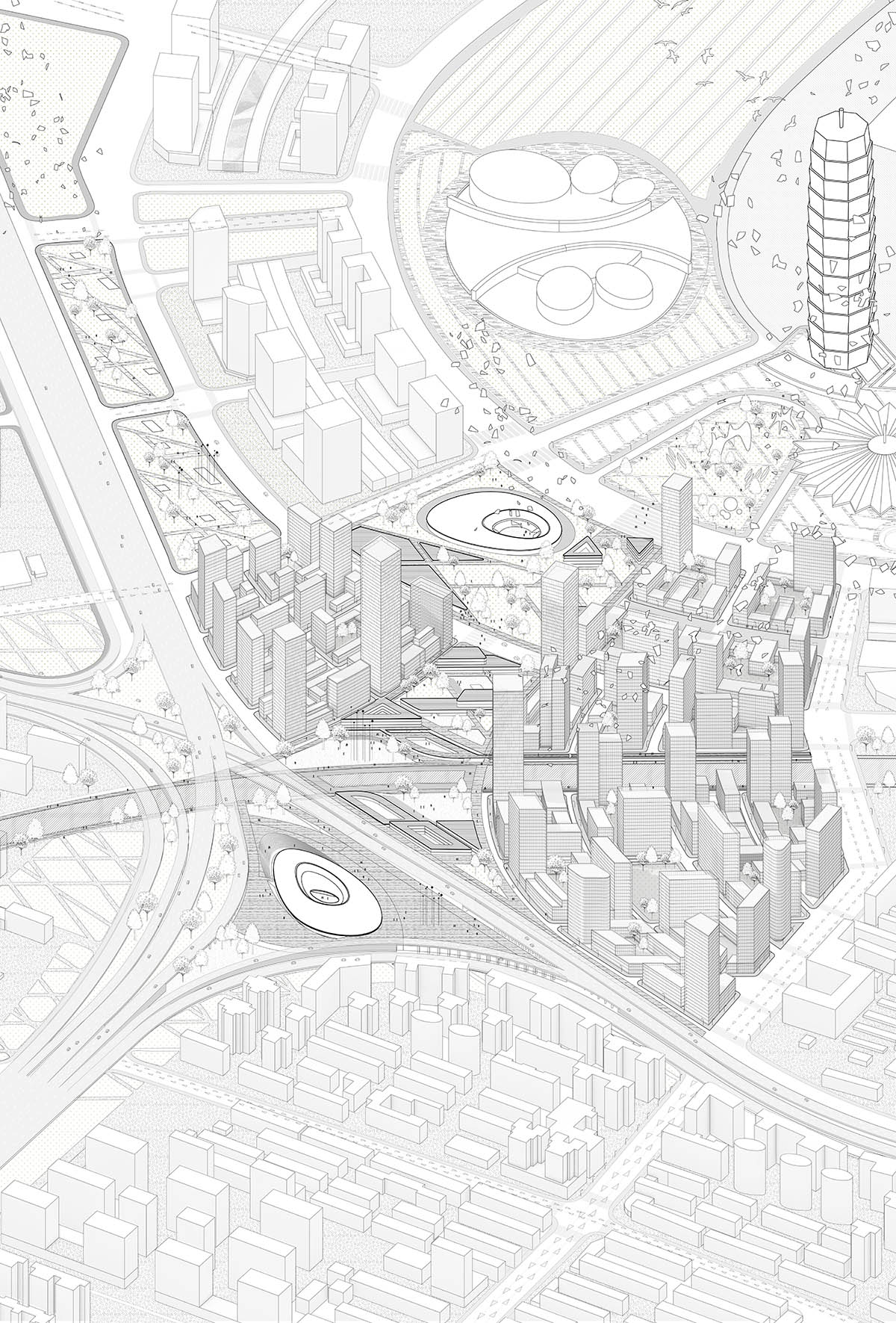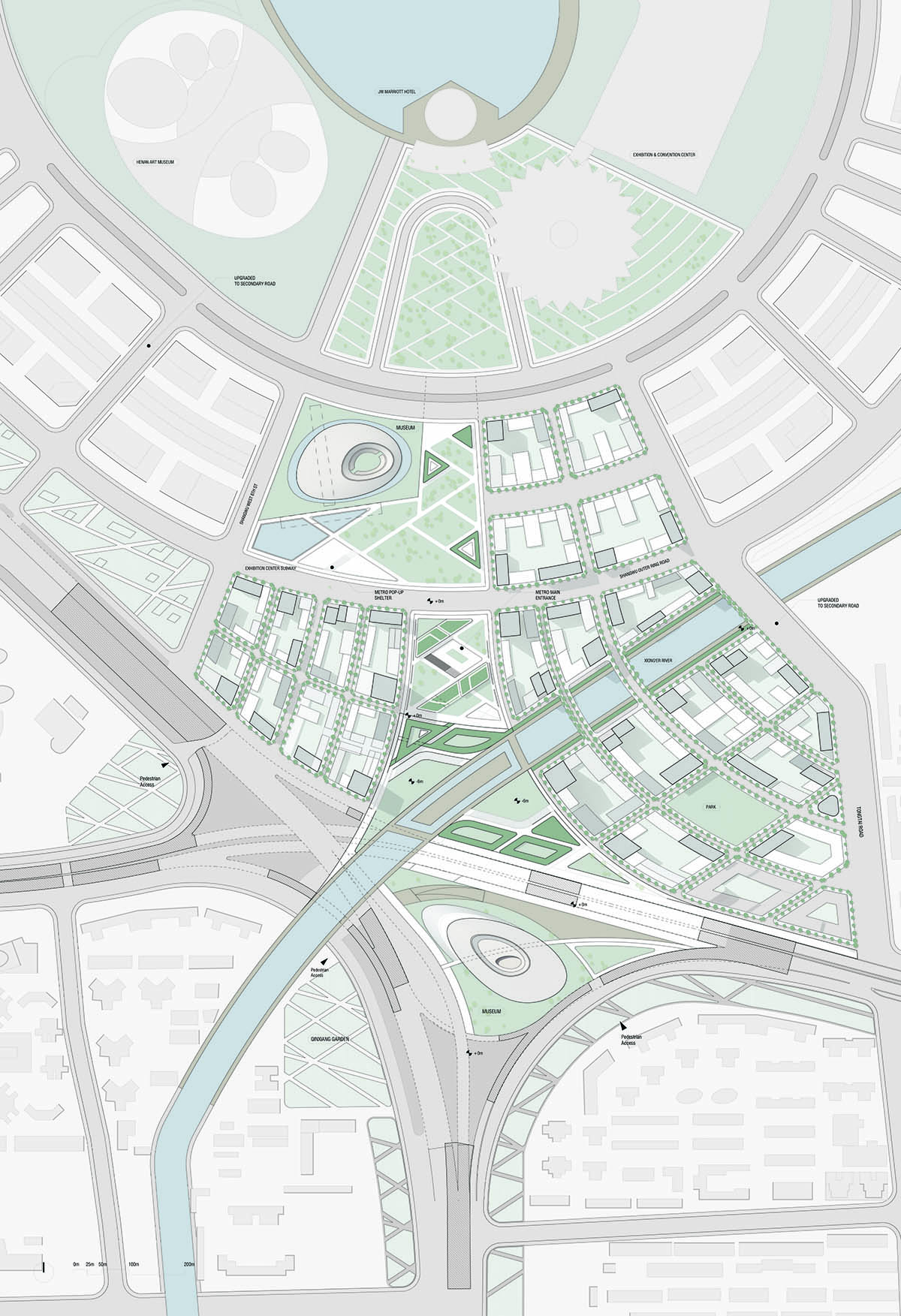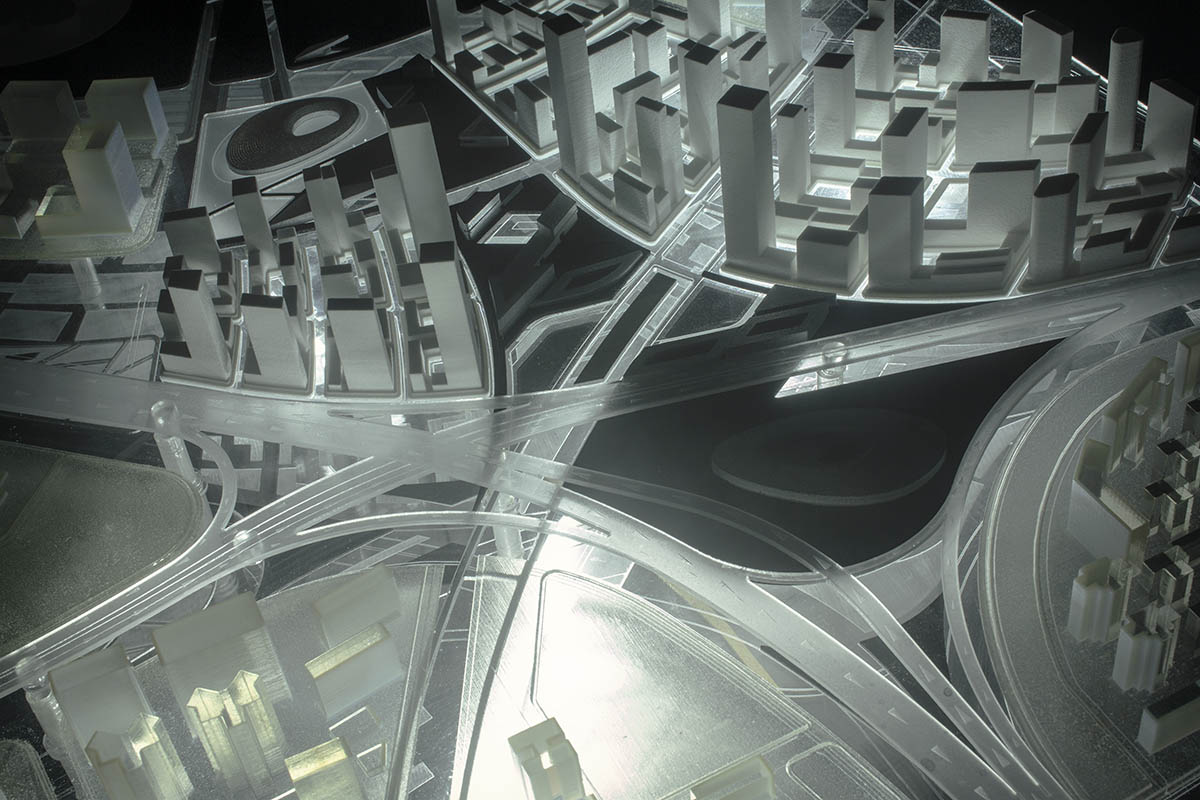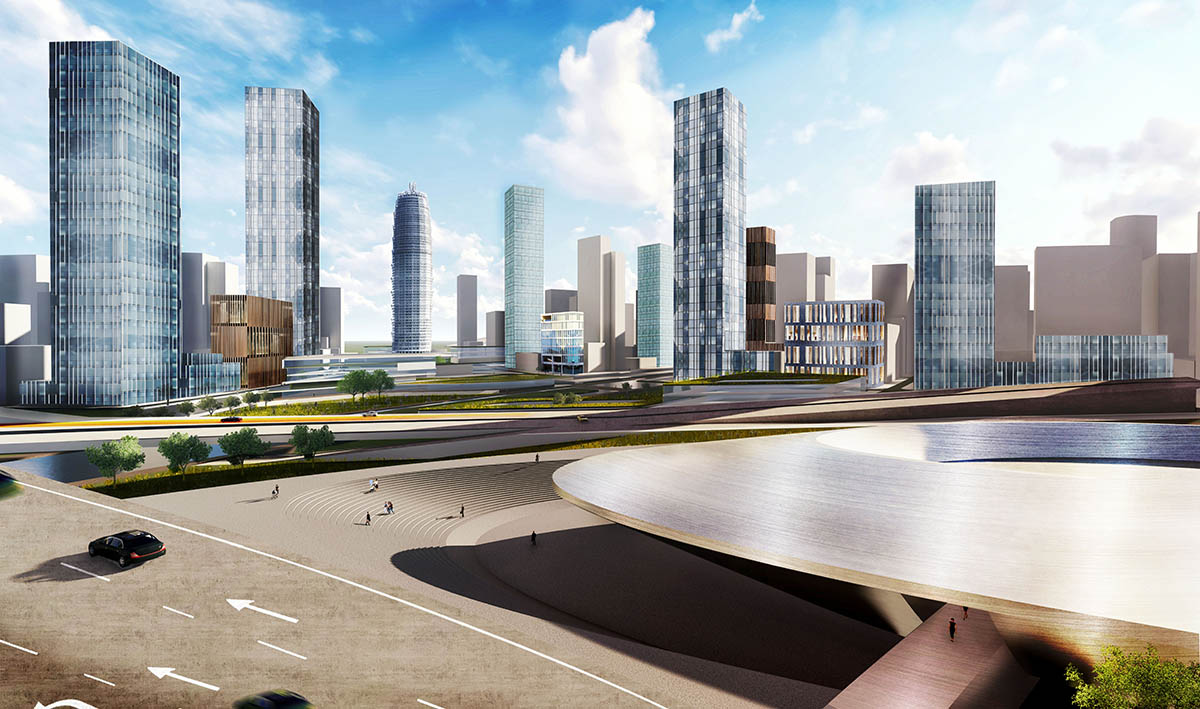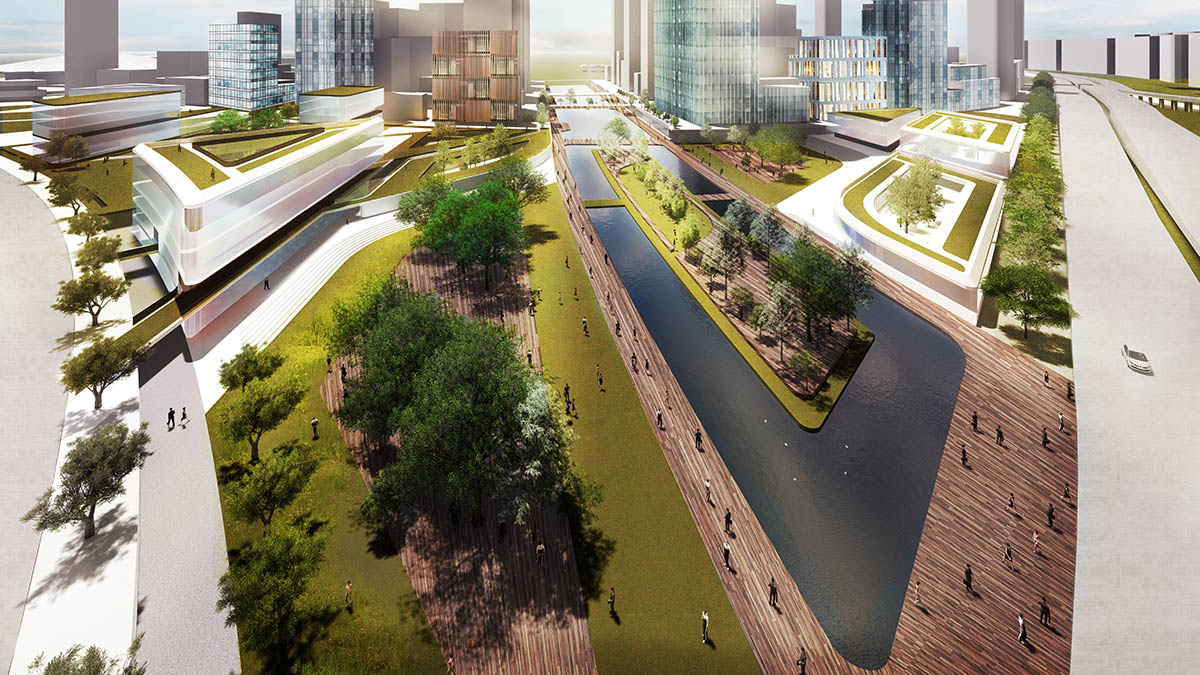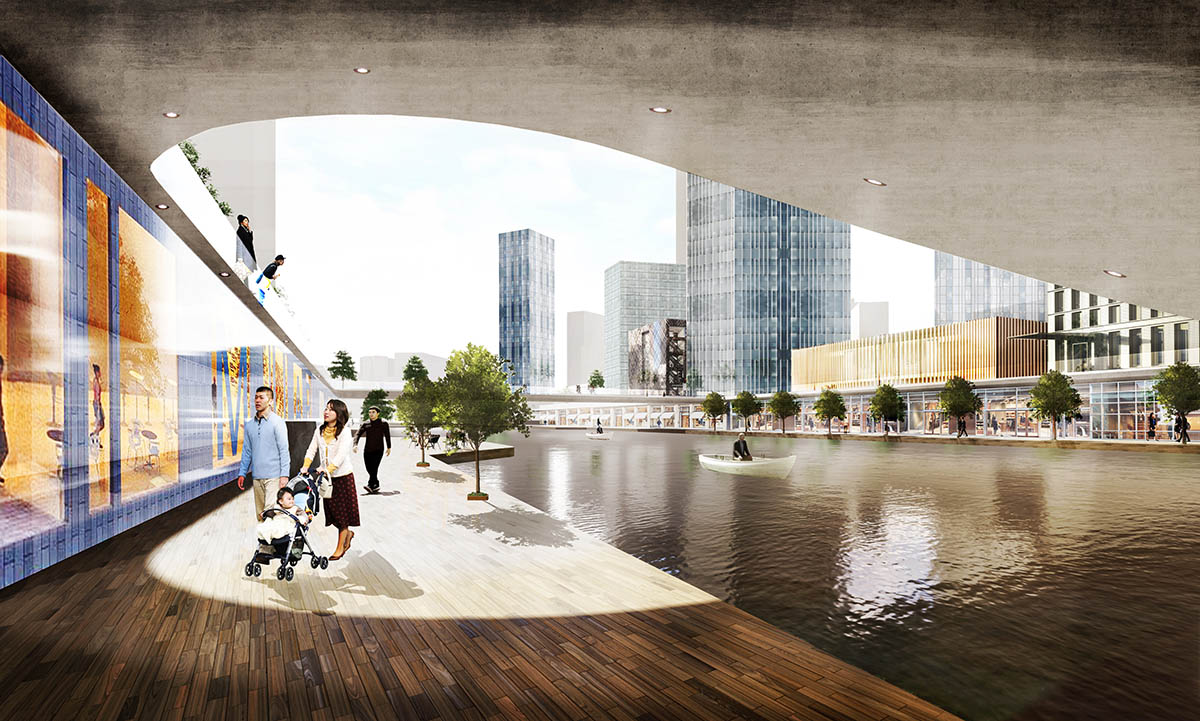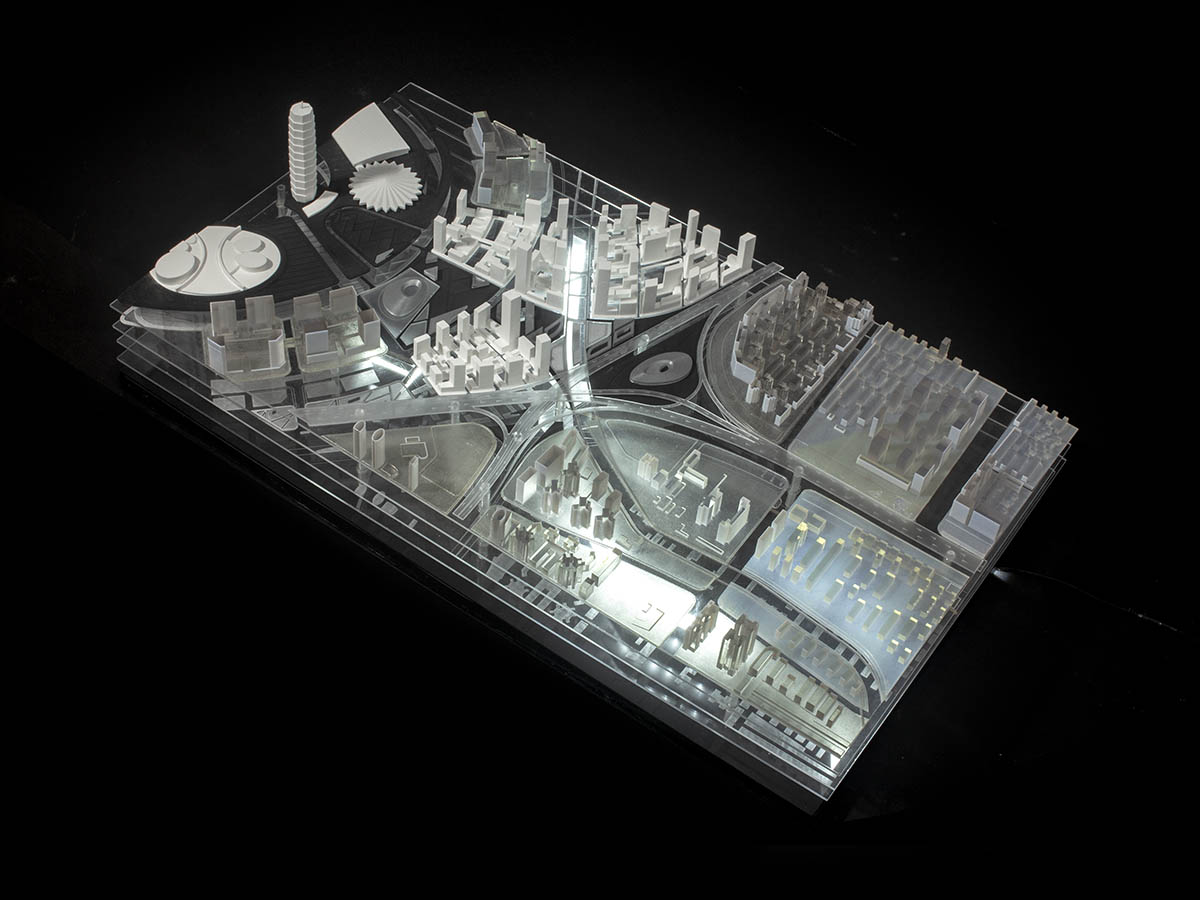Anthropic Infrastructure
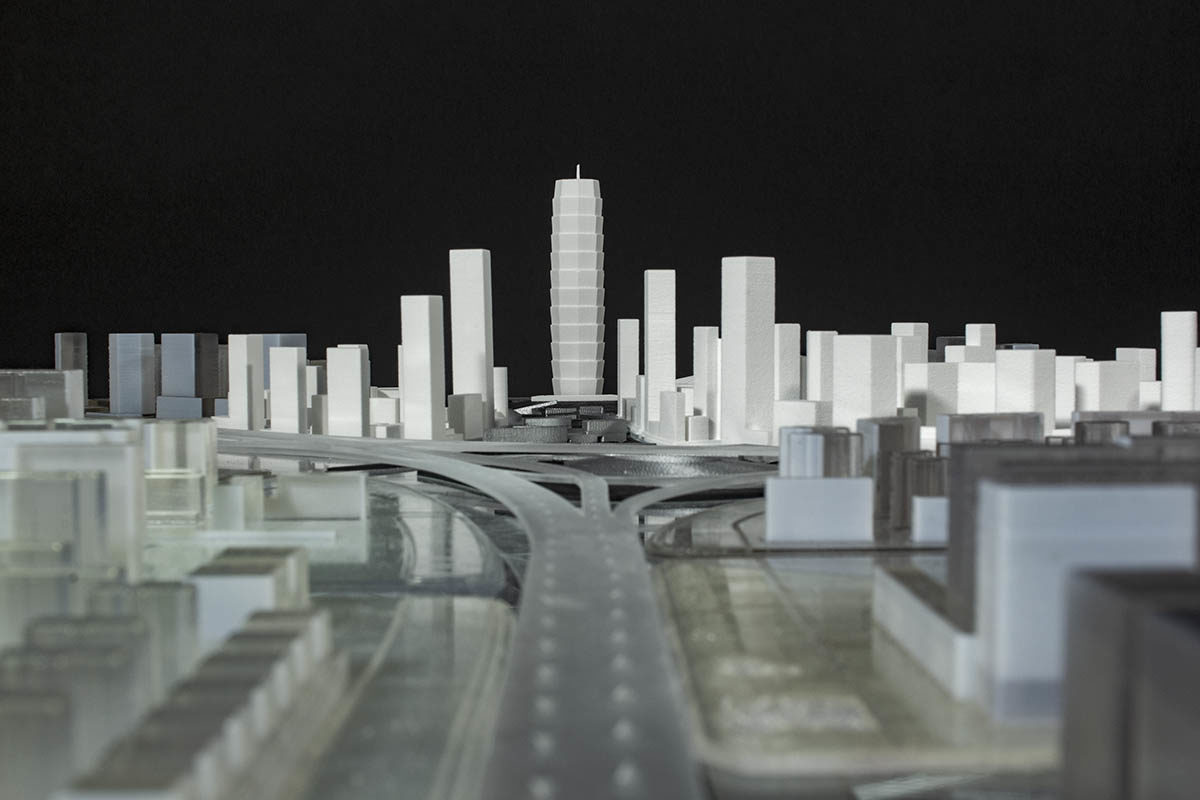
by Yoeun Chung (MAUD ’19), Luke Tan (MAUD ’19)
Situated in Zhengzhou, China, this project reconfigures a highway interchange, reclaiming its previously- inaccessible residual areas to introduce a pedestrian-oriented development that leverages on an existing metro station for densification.
Convergent systems and ambitions produce a site that is characterized by contingency and disjuncture. The highway interchange is along an edge that is shared by the Zhengdong New District, historic area and an emerging station city. It is also the threshold of a symbolic axis inscribed by a highway that connects the airport with the Zhengdong New District and marks the intersection between two major metro lines. These are the existing Line 1 which is the east-west backbone that links all the vital functions of the city, and the vertical Line 4, which the studio proposes to develop as the new spine of Zhengzhou.
The project aims to bring the site’s confluent forces into a synergistic relationship in three operations. First, by reconfiguring the interchange to liberate its previously inaccessible residual areas. Next, by introducing a programmed green spine to increase access and influence of the adjacent metro station while preserving the city’s symbolic axis. Finally, by gridding the adjacent regions to enhance connectivity for densification.
The higher ambition of this project is to formulate strategies to engage the aberrant conditions produced by infrastructural artifacts that are characteristic of rapid urbanization and automobile dependency. It is conceived as part of the studio’s larger scheme to establish the planned metro Line 4 as the future spine of Zhengzhou.
